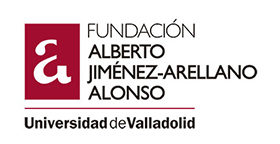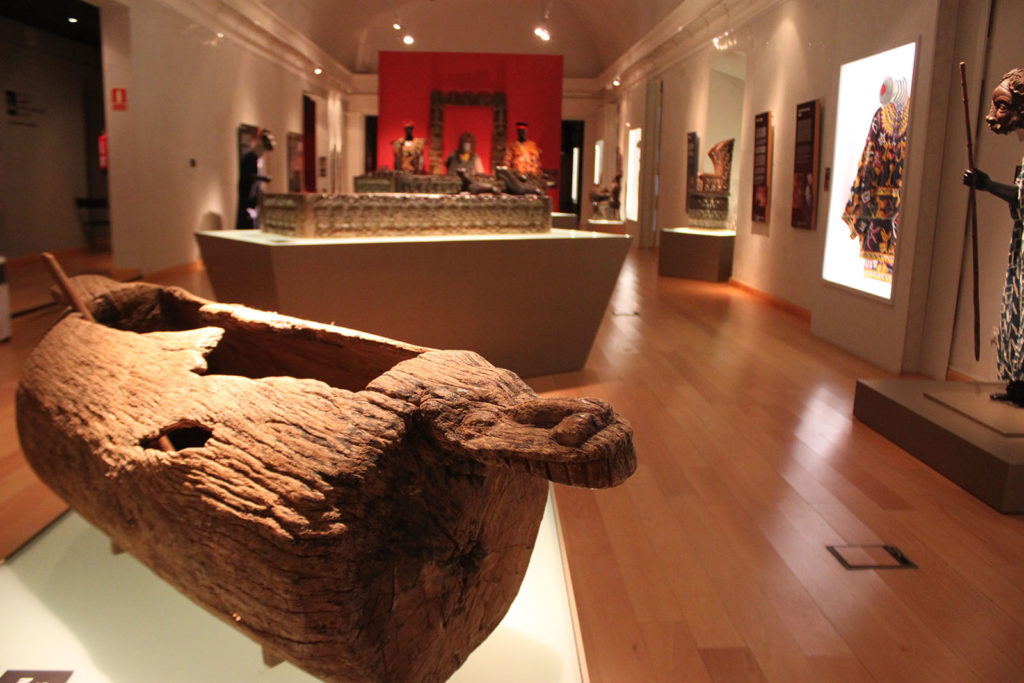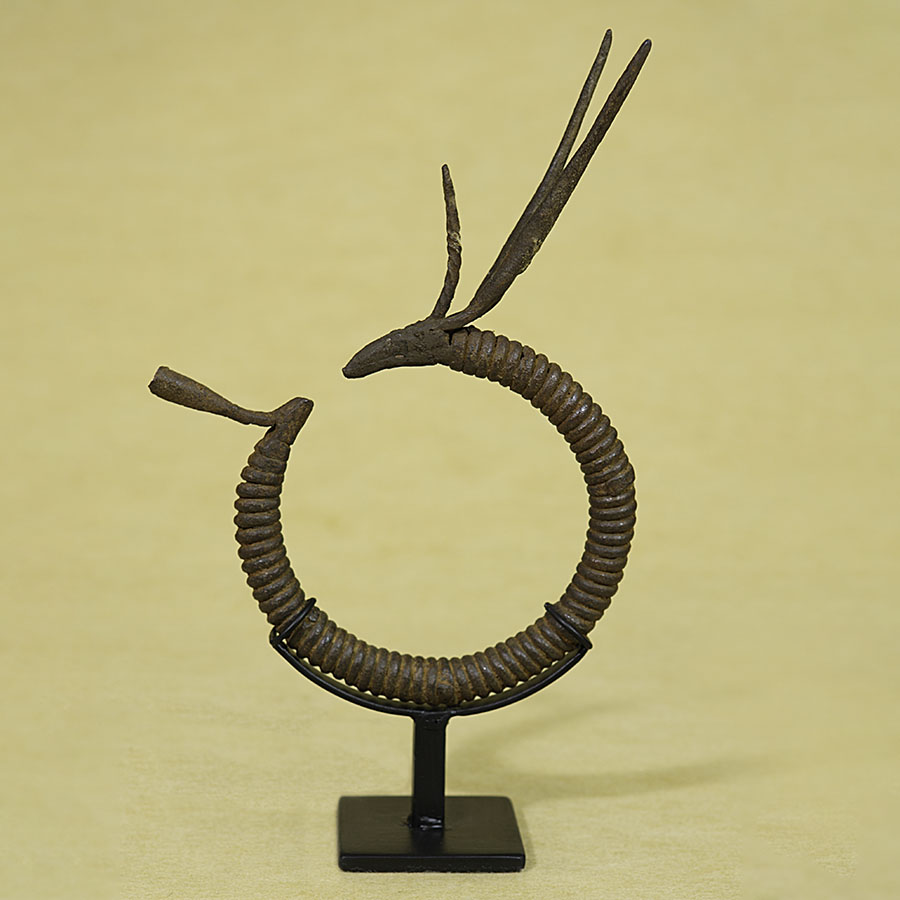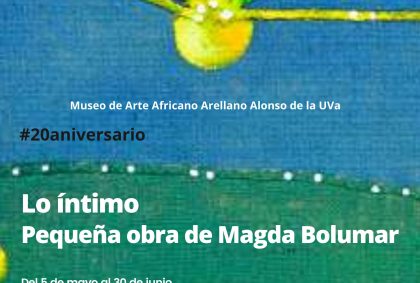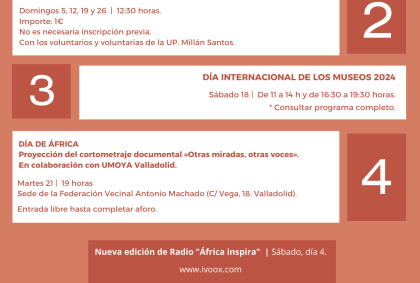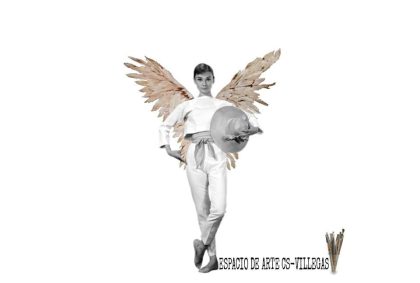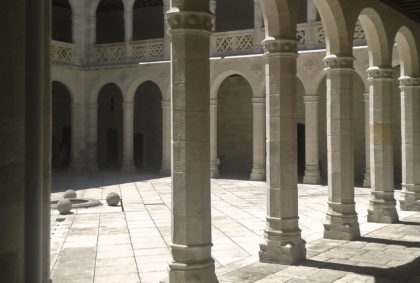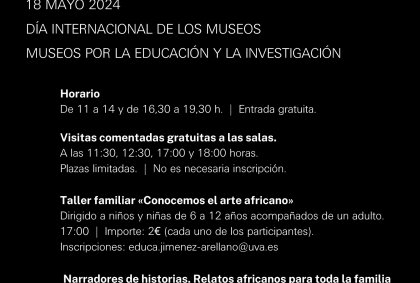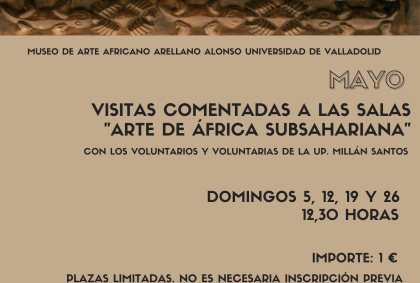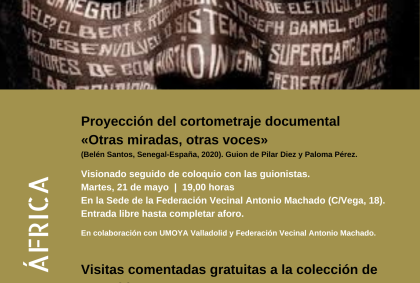1. TERRACOTTA FIGURATIVE SCULPTURE
- The knowledge of sub-Saharan African cultures.
The knowledge of sub-Saharan African cultures is too recent. In fact, the first remains were found in the late 19th and early 20th centuries.
These discoveries are usually found by chance, as a result of landslides or during the ploughing of fields. Archaeological excavations organised with specific criteria were less common. This circumstance, apart from the fact that oral traditions predominate in Africa and that some of these villages disappeared centuries ago, makes it difficult to know the social, economic, and symbolic context in which the pieces were made.
As a result, we are facing with information that future discoveries may disprove or corroborate. This will help us to complete, little by little, our knowledge about traditional African cultures.
- Cultures in the Niger River basin
The largest number of creations of the Arellano Alonso Foundation are from the villages located in the Niger River valley.
In the current Nigeria, the Nok culture and its terracotta figurative sculpture – 7th century B.C. to the 9th century A.C. – is considered to be the most ancient in the western part of the African continent. Its influence seems to be reflected in two other closer villages: the Sokoto and the Katsina – 5th century B.C. to the 8th century A.D.)
In the same geographical area but in the 12th century – Middle Ages in Europe – the refined ‘court art’ of two Yoruba kingdoms flourished: Ife and Edo. Both villages idealise the beauty of the representations of the royal family, highlighting their primacy in the social scale. In our collection there is one of the few terracotta representations of this type of the Edo culture, something unique due to most of them were made of metal.
In Mali four important cultures were born between the 10th to the 17th centuries: the Ségou, the Bankoni, the Tennenkou and the Djenné, the most influential one. The iconographic variety and the expressiveness of the representations are their principal features.
In Niger there are also other interesting villages, such as the Dori and, above all, the Bura; characterised by their rich funerary rituals. Both cultures date from the 3rd to the 17th centuries.
If we talk about Ghana we have to mention the Komaland – 13th to 17th centuries – and the Ashanti – 16th century – cultures. In our collection there are figurines of funerary offerings from the Komaland culture and heads figures related to funerary rituals from the Ashanti culture.
Closer in time and settled in the territory of the current Nigeria there are the Cham/Longuda, whose origins date back to the 18th and 19th centuries. Their figures, used in healing rituals, stand out for their peculiarity.
It is also essential to talk about the Jukun couple, exceptional for being the only pair of ancestral parents of the community found so far.
Not to be forgotten, along with those already mentioned, other cultures such as the Igbo, the Tiv and the Mambila.
The two Ewe figures – from Ghana and Togo –representing ‘Mami Wata’ and ‘Papa Densu’ are examples of the iconography of the voodoo gods and they are also very interesting.
- Villages in the Congo River basin
Around this river, an art linked to the court and characterised by its ornamental richness was developed. Many of these cultures survive nowadays in the current Democratic Republic of Congo. Such is the case of the Luba kingdom – 16th century – or the closer village of Chokwe – 16th century.
The Bakongo are notable for their n’tadi funeral stelae, made of stone. And, next to them, you have to mention to the Mangbetu, creators, in the 19th century, of some interesting jugs that reflect the aesthetics of the women and men of this town, characterized by dolichocephaly and body ornamentation (tattoos and scarifications).
- East Africa
Although most of the Arellano Alonso Foundation collection comes from the western part of the continent, it also includes some pieces from the eastern part. In this area, there are less important representations but still curious due to their interesting aesthetics.
In Ethiopia there is the village of the Falasha – 17th century – known as the ‘black Jews’, whose sculptural production is related to their religious beliefs.
In Tanzania we can find the Paré – 19th century – creators of interesting figurines used in initiation ceremonies for young people (both girls and boys). They are characterised by the mixture of clay with fabrics that wrap the body, revealing its forms.
- Horse riders
Within the collection of terracottas, there is a subset of six horse riders, which is exceptional due to its rarity and its large number in relation to those that can be seen in other collections.
This is because the representation of horse and horse riders is not common in African art due to the difficult survival of these animals in the sub-Saharan area. The reasons are lack of water and the malaria caused by the bite of the tsetse fly.
In addition, their ownership was reserved for those who held economic, political, or military power within the community, making them a sign of power and wealth.
It seems that these sculptures were modelled to be placed on funerary altars. The similarity between the features of the animal and the horse rider (scarifications, jewellery, etc.) reflects the symbiosis between both of them.
2. THE KINGDOM OF OKU
Located in what nowadays is the Republic of Cameroon, in the Grasslands region, with capital in Elak. It has a population of approximately 120,000 inhabitants grouped into 36 villages, each of which is headed by a local lineage chief.
In this collection of more than 100 objects, the predominant material is wood, as it is the most accessible. At the same time, the carpenters and craftsmen have an extraordinary skill in working with it.
This is the first time that such pieces have been seen outside their country of origin.
- Monarchic power
An important part of the collection of the Arellano Alonso Foundation are regalias: objects whose use is reserved exclusively for the sovereign and a symbol of his authority.
The most important ones are the chieftaincy beds, used in enthronement ceremonies, as well as ritual thrones, made from a single tree trunk whenever possible.
Not to be forgotten is the royal portico, whose columns, also carved in wood, are decorated with emblems of the sovereign’s authority, such as the double bell or the leopard.
- The masks
One of the most representative and striking elements in this collection are the masks of the various secret societies that continue to have a great influence on today’s Oku society.
Their function is to maintain the order and the social peace, preventing anti-social behaviour that threatens the general welfare or violated traditional customs. They exist in all social fields, such as justice, women, soldiers, or princes.
Masks are not limited to the face but refers to the whole ensemble that a man wears while dancing in ritual ceremonies. A carved piece is placed on the head, which may represent a human or an animal figure. To prevent damage to the dancer’s face, it is covered with a piece of cloth called ‘face cover’. The costume can be made of cloth or vegetable fibres, and is decorated with feathers, shells, bones, seeds, etc. On the feet they wear heavy anklets made of hollowed-out tail seeds, intended to make a deafening noise. The ensemble is completed with a baton or a spear, depending on the figure represented by the mask.
Possessing a powerful magical charge – juju – they are shrouded in mystery, remaining hidden so that they cannot be seen as long as they do not take part in any ceremony.
- Gods and music
In Oku, the gods are not a closed pantheon and new gods can be created if necessary, for example if an unexplained event occurs, as long as the seers so determine. These gods are usually important historical figures in the life of the community.
As for music and musical instruments, they have the status of ‘powerful medicine’, as they are powerful objects used by secret societies to carry out their functions.
3. TRADITIONAL AFRICAN CURRENCY
- TRADITIONAL AFRICAN CURRENCY
Throughout history, men and women have used objects and non-currency, as nowadays, to make payments, exchanges, donations, or offerings.
The first step in the evolution of monetary systems is the barter : the exchange of goods for other goods. But as early societies evolved, transactions became more complex. As a consequence, some exchangeable goods became a monetary unit and also a symbol of the social position of their possessor. These early forms of currency are called ‘paleo-coins’. In Africa, they were mainly linked to ceremonial practices and their use was reserved for the ruling classes.
It was not until the 15th century that the European currency was introduced to Africans. But they treasured it for the value of the metal and for its beauty and – although they accepted it for some payments – traditional currency continued to be used until the first decades of the 20th century.
- Commodity currency
El dinero tradicional africano no metálico fue semejante al utilizado en otras partes del mundo. Productos agrícolas (The commodity currency or the traditional African non-currency wasn’t different from the one used in other parts of the world. The most common ones were: agricultural products (cocoa, tobacco, cola nut, seed), manufactures (cotton, silk or raffia), minerals (salt, agate, quartz, quartzite), shells (seashells, cowries), livestock or even slaves.
- Metal currency
The metal currency has been the most widely used in traditional Africa as it offers several advantages: one is its greater resistance and the other is its ability to maintain its value over time. Most of this kind of currency were objects that lost their original utilitarian function to become a means of payment and a symbol. Then, their commercial use turned them into ‘currency’ and they began to be used for the direct acquisition of goods or the payment of services, debts, or taxes.
Another of their characteristics is the diversity of the material from which they were made of – gold, silver, iron, bronze, copper… – and their shapes.
Tipologías:
- Barras y lingotes: Los más demandados eran los fundidos en hierro, metal presente en amplias zonas del territorio africano, aunque también se fabricaron en bronce y cobre. En ocasiones se trataba de lingotes sencillos, pero otras eran trabajados con minuciosidad, adoptando formas vegetales o animales (sobre todo la serpiente).
- Utensilios agrícolas: Como la supervivencia de las comunidades agrícolas dependía de los utensilios de labranza se les confirió un carácter simbólico que los transformó también en medio de pago. Entre ellos destacan las azadas, destinadas sobre todo al pago de dotes. Las más espectaculares son las de los Angas/Mumuye (Nigeria), que pueden alcanzar 1 m de altura y hasta 30 kg de peso.
- Armas: En numerosas culturas antiguas es habitual que las armas, imprescindibles para la caza y la defensa, se convirtieran en símbolo de prestigio social y económico del poseedor. Su carácter simbólico se acentuó tras la introducción de las armas de fuego de mano de los europeos a partir del siglo XVII. Tanto lanzas como puntas de flecha y otras armas se utilizaron para pagos ceremoniales o compraventa de bienes excepcionales.
- Instrumentos musicales: La música es un concepto de gran valor en África y cada instrumento tiene un carácter ritual y ceremonial, estando dotado incluso de poderes mágicos. No es extraño pues que estos objetos tan valiosos se convirtieran también en medio de pago. Se emplearon sobre todo campanas en diversos variantes (sencillas, dobles, ensartadas en una argolla, etc.).
1. ESCULTURA FIGURATIVA EN TERRACOTA
- El conocimiento de las culturas de África subsahariana
El conocimiento de las culturas de África subsahariana es bastante reciente. Tanto es así que los primeros vestigios se encontraron a partir de finales del siglo XIX y comienzos del XX.
Los hallazgos se producen normalmente de forma casual, a raíz de corrimientos de tierras o durante trabajos de roturación de los campos. En menos ocasiones se organizaron excavaciones arqueológicas con criterios científicos. Esta circunstancia, junto con el hecho de que en África predomina la tradición oral, a lo que se une la desaparición, incluso hace siglos, de algunos de estos pueblos, dificulta conocer el contexto social, económico y simbólico en que las piezas fueron creadas.
Como consecuencia, estamos ante unas informaciones que puede que hallazgos futuros venga a desmentir o corroborar ayudándonos a completar, poco a poco, el conocimiento sobre las culturas tradicionales africanas.
- Culturas en la cuenca del río Níger
Es en el valle del río Níger donde se localiza el mayor número de pueblos cuyas creaciones forman parte de la colección de la Fundación Arellano Alonso.
Así, en la actual Nigeria, se asentaba la cultura Nok, cuya escultura figurativa en terracota, datada entre los s.VII a.C al IX d.C., es considerada la más antigua de la zona occidental del continente africano. Su influencia parece reflejarse en otros dos pueblos vecinos y cohetáneos: los Sokoto y los Katsina (s.V a.C-VIII d.C.).
En el mismo espacio geográfico, pero ya entrado el siglo XII (plena Edad Media europea), floreció el refinado «arte de corte» de dos reinos yoruba: Ife y Edo. En ambos destaca la belleza idealizada de las representaciones de la familia real, resaltando su primacía en la escala social. En nuestra colección contamos con una de las pocas representaciones de este tipo en terracota de la cultura edo, algo excepcional puesto que la mayoría fueron realizadas en metal.
En Malí, se desarrollan entre los siglos X y XVII cuatro importantes culturas: la Ségou, la Bankoni, la Tennenkou y, la más relevante e influyente, la Djenné. Destaca ésta por la variedad iconográfica y la expresividad de las figuras representadas.
En Níger también se encuentran interesantes pueblos, como el Dori y, sobre todo el Bura, caracterizado por su ricos rituales funerarios. Ambos se datan entre los siglos III al XVII.
Hablar de Ghana es hablar de las culturas Komaland (s.XIII-XVII) y Ashanti (s.XVI). De los primeros se cuenta con figuritas pertenecientes a ajuares funerarios y, de los segundos, cabezas vinculadas también a estos rituales.
Más próximos en el tiempo se encuentran los Cham/Longuda, asentados en territorio de la actual Nigeria y cuyo origen se sitúa en los siglos XVIII y XIX. Sus figuras, utilizadas en rituales curativos, llaman la atención por su peculiaridad.
Hay que destacar además la pareja Jukun, excepcional por ser la única pareja de padres ancestrales de la comunidad encontrada hasta el momento.
No hay que olvidar, junto a las ya mencionadas, otras culturas como los Igbo, los Tiv, o los Mambila.
Muy interesantes son también las dos piezas Ewe (Ghana/Togo) que representana «Mami Wata» y «Papa Densu», dos ejemplos de la iconografía de los dioses vudú.
- Pueblos en la cuenta del río Congo
En torno a este rio se desarrolló un arte vinculado a la corte que se caracteriza por la riqueza ornamental. Muchas de aquellas culturas perviven hoy asentadas en la actual República Democrática del Congo. Tal es el caso del reino Luba (siglo XVI) o de su vecino Chokwe (siglo XVI).
Los Bakongo destacan por sus estelas funerarias n’tadi, realizadas en piedra. Y, junto a ellos, hay que mecionar a los Mangbetu, creadores, en el siglo XIX de unas interesantes jarras que reflejan la estética de las mujeres y hombres de este pueblo, caracterizada por la dolicocefalia y la ornamentación corporal (tatuajes y escarificaciones).
- África oriental
Aunque el grueso de la colección de arte africano de la Fundación Arellano Alonso procede de la zona occidental del continente, también se integran en ella algunas piezas procedente de la zona oriental del mismo. En este espacio se van a desarrollar culturas con unas manifestaciones artísticas que, a pesar de no haber tenido tanta trascendencia, no dejan de presentar una interesante estética.
Así, en Etiopía se encuentran los Falasha (s.XVII), conocidos como los «judíos negros», cuya producción escultórica se relaciona con sus creencias religiosas.
En Tanzania se asientan los Paré (siglo XIX), creadores de unas interesantes figurillas utilizadas en las ceremonias de iniciación de los jóvenes (tanto niñas como niños). Se caracterizan por la mezcla del barro con tejidos que envuelven el cuerpo trasluciendo las formas del mismo.
- Conjunto de jinetes
Dentro de la colección de terracotas, destaca un subconjunto compuesto por seis jinetes, que resulta excepcional por su rareza y por su elevado número en relación con los que se pueden contemplar en otras colecciones.
Esto es debido a que la representación de jinetes a caballo no es habitual en el arte africano debido a la difícil supervivencia de estos animales en la zona subsaharian. Las razones son la falta de agua, la malaria provocada por la picadura de la mosca tse-tse.
A ello se suma que su propiedad está reservada a quienes ostentaban un poder económico, político o militar dentro de la comunidad, convirtiéndose en un signo de poder y de riqueza.
Parece que estas esculturas eran modeladas para ser depositadas en los altares funerarios. Llama la atención la semejanza entre los rasgos del animal y su montura (escarificaciones, joyas…), lo cual es reflejo de la simbiosis que se llega a producir entre ambos.
2. EL REINO DE OKU
Localizado en la actual república de Camerún, concretamente en la región de Grasslands, su capital es Elak. Cuenta con una población aproximada de 120.000 habitantes agrupados en 36 pueblos, al frente a cada uno de los cuales se sitúa un jefe de linaje local.
En esta colección, de más de 100 objetos, el material predominante es la madera, puesto que es lo más accesible, destacando la extraordinaria habilidad los artesanos carpinteros a la hora de trabajarla.
Es la primera vez que este tipo de piezas pueden verse fuera de su país originario.
- El poder monárquico
Una parte relevante de colección de la Fundación Arellano Alonso son regalías, es decir, objetos cuyo uso está reservado exclusivamente al soberano y que son símbolo de su autoridad.
Entre ellas destacan las camas de jefatura, utilizadas en las ceremonias de entronización, así como los tronos rituales, fabricados a partir de un único tronco de árbol siempre que es posible.
No hay que olvidar el pórtico real, cuyas columnas talladas igualmente en madera, se decoran con emblemas de la autoridad del soberano, como la doble campana o el leopardo.
- Las máscaras
Uno de los elementos más representativos e impactantes dentro de esta colección son las máscaras de las distintas sociedades secretas que siguen teniendo una gran influencia en la sociedad actual de Oku.
Su función es mantener el orden y la paz social, frenando los comportamientos antisociales que amenacen el bienestar general o que atenten contra las costumbres tradicionales. Existen en todos los campos sociales, como el de la justicia, las mujeres, los soldados o los príncipes.
La máscaras no se limitan al rostro, sino que se refieren a todo el conjunto que portará un hombre mientras baila en las distintas ceremonias rituales. Sobre la cabeza se dispone una pieza tallada que puede representar una figura humana o animal. Para evitar que dañe la cara del danzante, ésta se cubre con una pieza de tela denominada “cubre rostro”. El traje con el que se viste puede ser de tela o de fibras vegetales, decorándose son plumas, conchas, osamentas, semillas, etc. En los pies se colocan las pesadas tobilleras de semillas de cola vaciadas, destinadas a provocar un ensordecedor ruido. El conjunto se completa con un bastón o lanza en función de la figura a la que represente la máscara.
Poseedoras de una poderosa carga mágica (juju) están rodeadas del misterio, permaneciendo ocultas para que no puedan ser vistas mientras no participen en ninguna ceremonia.
- Dioses y música
En Oku, los dioses no constituyen un panteón cerrado y pueden crearse nuevas divinidades si fuera necesario, por ejemplo si se produce un suceso inexplicable, siempre que los adivinos así lo determinen. Dichos dioses suelen ser personajes históricos relevantes de la vida la comunidad.
En cuanto a la música y los instrumentos musicales, ostentan la categoría de «poderosa medicina», por ser objetos cargados de poder de los que se valen las sociedades secretas para llevar a cabo sus funciones.
3. MONEDAS AFRICANAS TRADICIONALES
- MONEDAS AFRICANAS TRADICIONALES
A lo largo de la historia, hombres y mujeres han utilizado objetos y no monedas, como las empleadas hoy, para realizar pagos, intercambios, donativos u ofrendas.
El primer peldaño en la evolución de los sistemas monetarios es el trueque, mediante el cual se intercambiaban unas mercancías por otras. Pero a medida que las sociedades primigenias evolucionaron, las transacciones se hicieron más complejas. Como consecuencia algunas mercancías intercambiables se transformaron en unidad monetaria y además en símbolo de la posición social de su poseedor. Estas primeras formas de dinero son denominadas paleo-monedas. En África, estaban vinculadas sobre todo a prácticas ceremoniales y su uso estaba reservado a las clases dirigentes.
Es en el siglo XV cuando los africanos conocen la moneda europea. Pero la atesoraban por el valor del metal y por su belleza y, aunque la admitían para algunos pagos, el dinero tradicional siguió utilizándose hasta las primeras décadas del siglo XX.
- La moneda mercancía
El dinero tradicional africano no metálico fue semejante al utilizado en otras partes del mundo. Productos agrícolas (cacao, tabaco, nuez de cola, semillas), manufacturas (tejidos de algodón, seda o rafia), minerales (sal, ágatas, cuerzo, cuarcita), conchas (caracolas, cauris, olivellas), ganado e incluso esclavos fueron los más habituales.
- La moneda metálica
La moneda de metal ha sido la más manejada en el África tradicional al ofrecer varias ventajas: una es la de su mayor resistencia y la otra la capacidad para mantener su valor en el tiempo. La mayoría de dichas monedas fueron objetos que perdieron su función utilitaria original para transformarse en un medio de pago y en un símbolo. Su uso comercial los convirtió pues en «moneda» y pasaron a emplearse para la adquisición directa de bienes o el pago de servicios, deudas o tributos. Otra de sus características es la diversidad tanto de los materiales con que se fabricaron (oro, plata, hierro, bronce, cobre…) como se sus formas.
Era fundida por los herreros locales, personajes respetados y temidos a los que se atribuían poderes mágicos por trabajar con un material misterioso como el hierro, al que se unía un elemento inquietante: el fuego.
Other typologies:
- Bars and ingots: the most common ones were those cast in iron, a metal found in large parts of Africa, although they were also made in bronze and copper. Sometimes they were simple ingots, but other times they were elaborately worked, adopting plat or animal shapes – especially the snake.
- Agricultural tools: as the survival of farming communities depended on farming tools, they were given a symbolic character that also transformed them into a means of payment. One of the most used were hoes, which were mainly used for the payment of dowries. The most spectacular are those of the Angas/Mumuye, Nigeria, which can reach a height of 1 m and a weight up to 30 kg.
- Weapons: in many ancient cultures it was common that weapons, essential for hunting and defence, became a symbol of social an economic prestige of the possessor. Their symbolic character increased after the introduction of the handguns by the Europeans from the 17th century onwards. Spears, arrowheads, and other weapons were used for ceremonial payments or the purchase and sale of exceptional goods.
- Musical instruments: music is a highly valued concept in Africa and each instrument has a ritual and ceremonial character, they also have magical powers. It is therefore not surprising that these valuable objects also become a means of payment. Bells were mainly used in different variations: single, double, strung on a ring, etc.)
